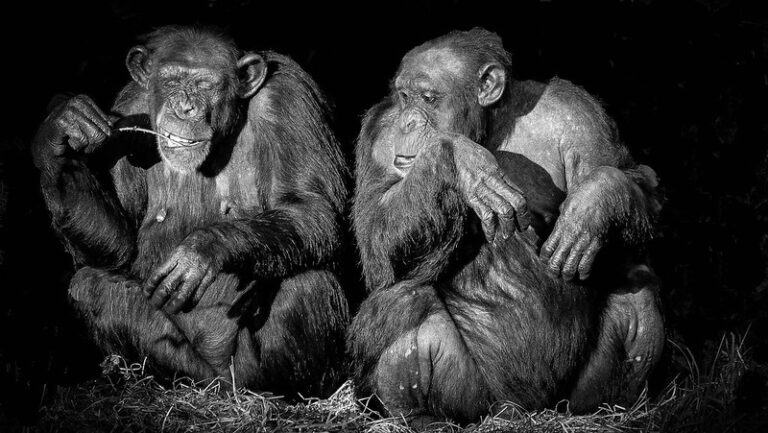Researchers used the chimpanzee optimization algorithm to optimize the hyperparameters of five machine learning models for predicting PV energy yield. This algorithm is based on the cooperative hunting behavior of chimpanzees in nature and mimics the way they work together to hunt prey.
A scientific group led by researchers from Germany’s Jordan University has analyzed the effect of the so-called chimp optimization algorithm (ChOA) on various Machine Learning (ML) models for predicting PV yield production.
The ChOA is based on the cooperative hunting behavior of chimpanzees in nature, mimicking the way they work together to capture prey, which is common in small mammals. They usually act in a group of three or four hunters and initially drive and block prey, then chase and attack them.
The algorithm examines different combinations of parameters to achieve the most promising result. It was used by the scientists to optimize the hyperparameters for five types of ML models. These include multiple linear regression (MLR), decision tree regression (DTR), random forest regression (RFR), support vector regression (SVR), and multilayer perceptron (MLP).
“The effectiveness of this contribution is verified using data from a real case study, using several performance metrics from the literature, including the root mean square error (RMSE), the mean absolute error (MAE) and the coefficient of determination ( R2),” the researchers explained.
Hyperparameters are external configurations set before the learning process begins that determine the learning process and do not change during training. Hyperparameters – such as the learning rate in neural networks – influence training dynamics and can therefore significantly impact model effectiveness.
All five models, with and without ChOA, were trained on 948 records and tested on 362 records. The data was taken between 2015 and 2018 from a 264 kW PV system installed on a roof of the Applied Science University in Amman, the capital of Jordan. The tilt angle of the installation was set at 11 degrees and the azimuth angle at −36 degrees. Meteorological variables such as wind speed, relative humidity, ambient temperature and solar radiation were measured from a nearby weather station.
“Amman, Jordan, experiences a Mediterranean climate characterized by hot, dry summers and cool, wet winters,” the researchers added. “the average year-round temperature is 17.63 C, and the average annual global horizontal irradiation is 2040.2 kWh/m2.”
Through this analysis, the scientists found that all models experienced performance improvements as a result of refining the hyperparameters using the ChOA.
“DTR showed substantial improvements, with test RMSE decreasing to 1.972 and R2 increasing to 0.951,” they explained. “The RFR model showed notable improvements, with RMSE values decreasing to 1.773 for training and 1.837 for testing, and R2 values increasing to 0.964 for training and 0.963 for testing. The SVR model experienced the most notable improvement, with test RMSE decreasing to 0.818 and R2 increasing to 0.977.”
After ChOA optimization, MLP was found to show the best results in predicting PV energy yield. Specifically, it could reach 0.503, 0.397, and 0.99 in RMSE, MAE, and R2, respectively. “The ChOA effectively refined the parameters, resulting in improved model fit, reduced overfitting, and improved generalization compared to two other commonly used optimization algorithms from the literature: particle swarm optimization (PSO) and genetic algorithm (GA),” the team said. concluded.
The results are presented in “Improving the prediction of solar photovoltaic energy production using various machine learning models aligned with the Chimp optimization algorithm”, published in Scientific reports. The group included academics from the Jordanian German Jordanian University, the University of Jordan, Al-Balqa Applied University and Alabama University. Tuskegee University.
This content is copyrighted and may not be reused. If you would like to collaborate with us and reuse some of our content, please contact: editors@pv-magazine.com.


